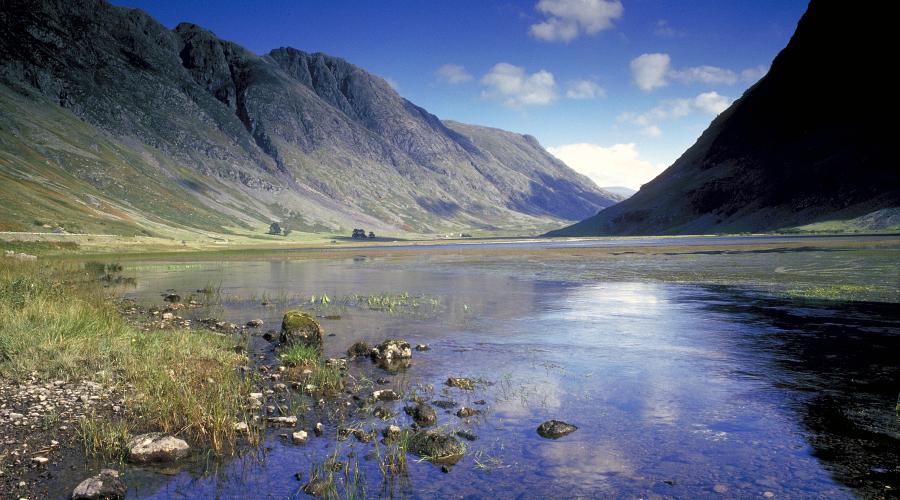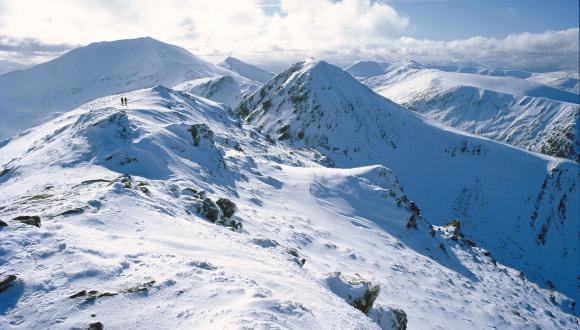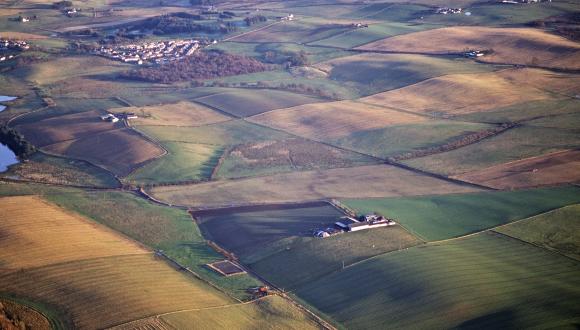
Ice-carved landscapes
Under the right conditions, glaciers can be very effective agents of erosion – abrading, crushing and quarrying the underlying bedrock.
In the uplands, powerful ice streams carved deep glacial troughs from existing valleys, as at Glen Clova and Glen Docherty. Sometimes they formed deep rock basins on the valley floors, as at Loch Ness and Loch Monar.
Elsewhere, ice streams breached watersheds to cut new glens such as Glencoe and Glen Shiel, which are now important transport routes.
Scouring the landscape
In some areas, glaciers had ‘selective’ effects. For example, they deepened pre-existing glens but did little to alter adjacent plateau surfaces, as in the Cairngorms.
In other places, the glaciers extensively scraped, scoured and roughened the bedrock, often up to the summits. Landscapes formed by this ‘areal scouring’ can be seen in the Western Isles, Sutherland and Ardgour.
Eastern lowlands
In the lowlands of eastern Scotland, the glaciers moulded and streamlined the landscape, producing crag-and-tail landforms such as Edinburgh’s Castle Rock and Royal Mile.
Individual rock outcrops were often shaped into ‘roches moutonnées’, with smoothed upstream sides and quarried downstream sides. Good examples occur in Upper Deeside, south of Aviemore and at Dulnain Bridge.
West and North West Highlands
The glaciers had the most impact here. More than 90% of rock basins and 90% of corries in the West and North West Highlands are in westerly flowing river catchments. In these catchments, snowfall was greater, the ice thicker and the glaciers steeper and faster flowing – and hence better at erosion.
Unchanged in the north-east
Elsewhere, especially in north-east Scotland, the glaciers had a relatively benign effect on the landscape.
Many of the features of the pre-glacial period remain little modified, especially:
- gently rolling slopes and weathered bedrock – as in Buchan
- tors, which have been uncovered but not destroyed – as on Bennachie
- river systems, which remain largely intact







